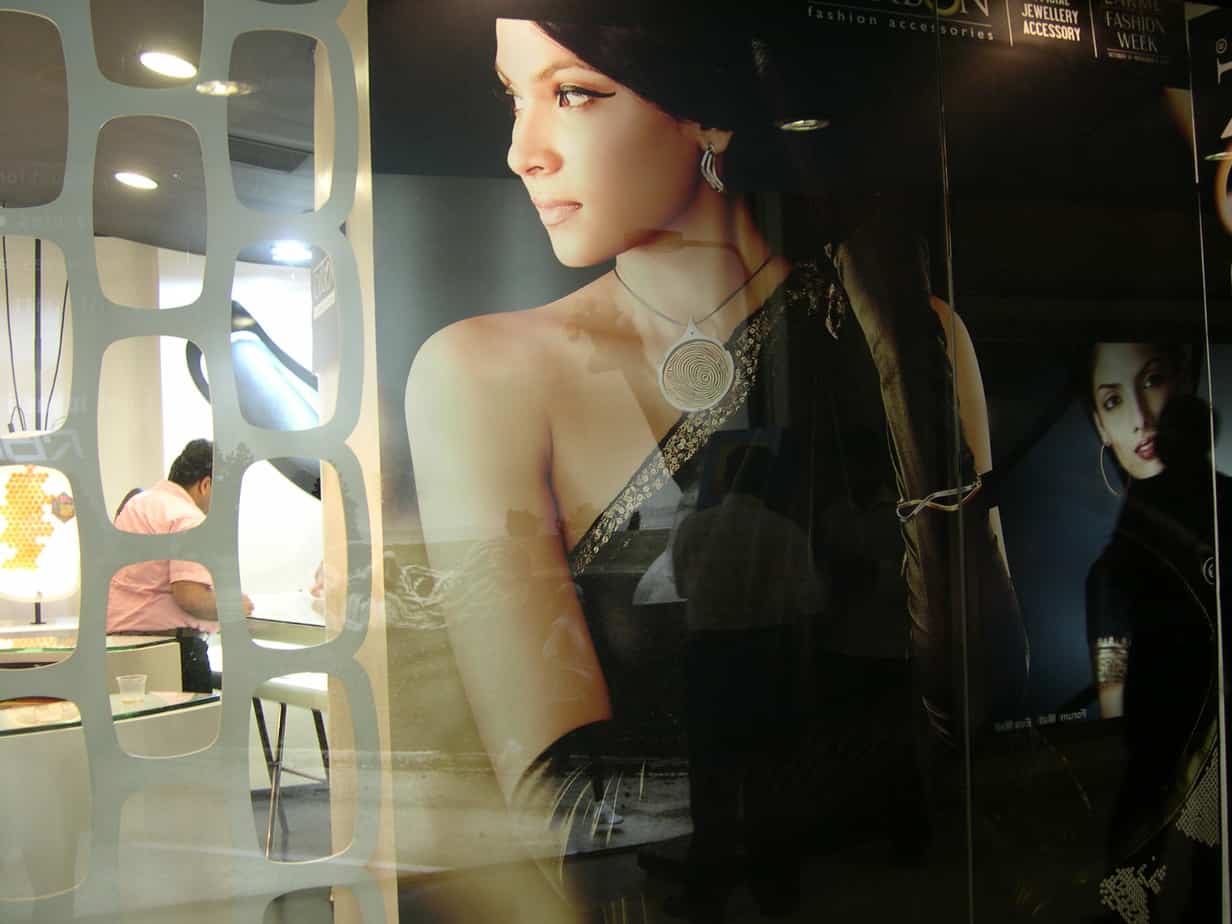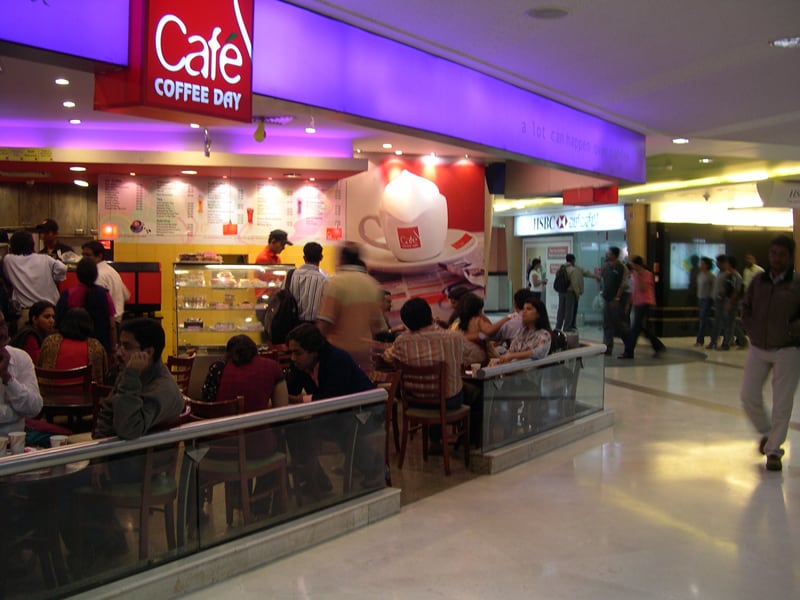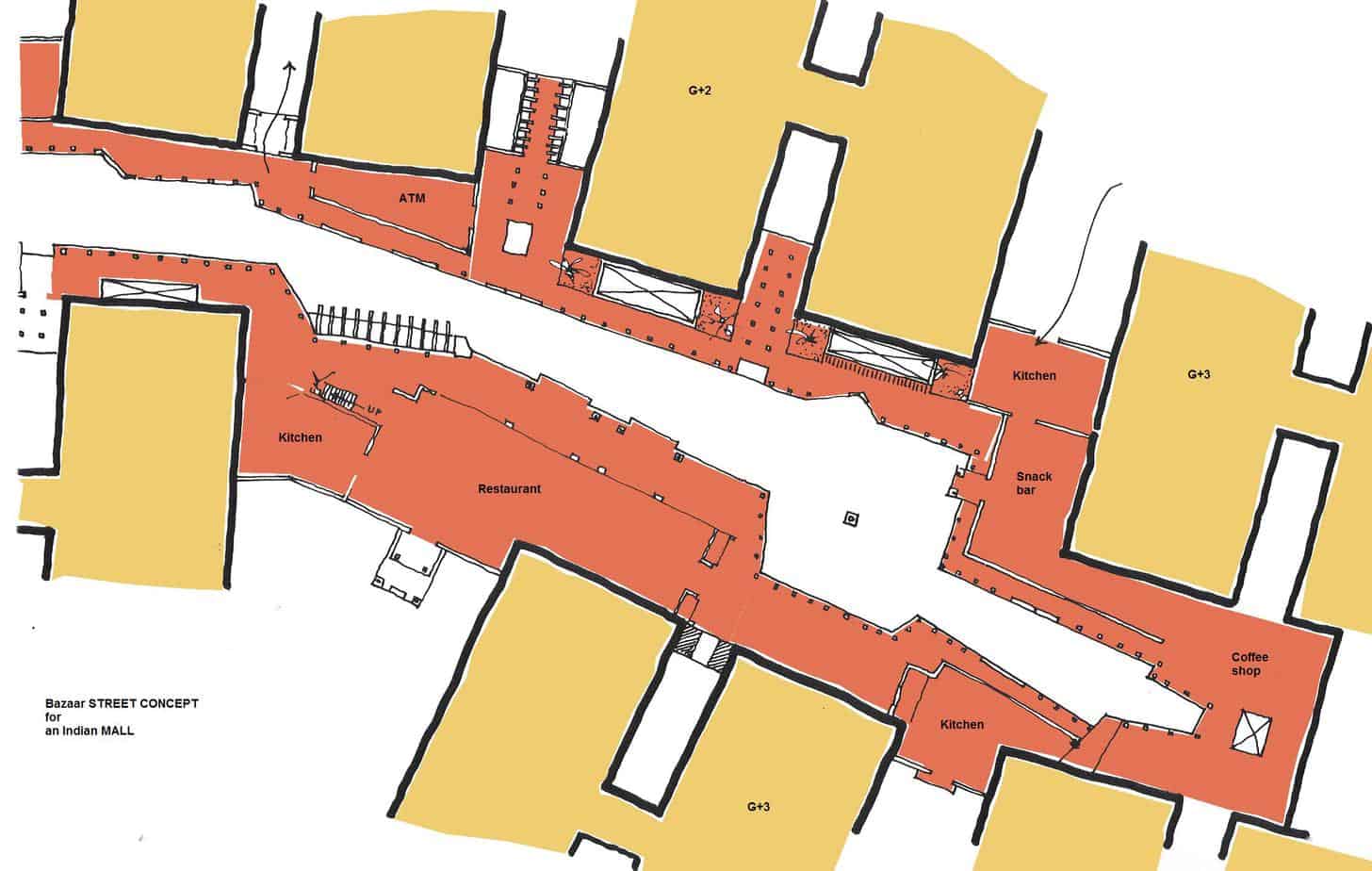This article begins with understanding the new mall culture in India. It then explores from the past the bazaar culture that has always been a part of life in India. Thereafter, it turns to the world of form and design, arguing that a clearer understanding of and deliberate choice of certain designs and patterns can more suitably engage the Indian consumer, offering both social anchor and a lively consumer experience.

Shop front within the Forum mall: Developing a new culture of purchase and consumption
A Mall Culture
In India, as elsewhere in the developing world, malls are being constructed in small and big cities, and retail shopping is taking on a whole new direction. Is India adopting this new, unfamiliar culture consciously, or is there an alternative that might help us evolve our own culture of purchase and consumption? Is the modern mall an efficient form of commercial exchange, compared to the earlier bazaars? What is the future of street shopping in urban areas and in the city of Bangalore?
Evolution of the Indian shopping environment is now being interrupted. We replicate western concepts of shopping by introducing the ‘Shopper’s Stop’, or ‘Lifestyle’ or ‘Food World’. These are a few ideas of retailing that we have chosen to call our own. Shopping malls and retail chains selling fruits and vegetables are here to stay. Chain stores with their smart interiors, air conditioning and so on make the Indian consumer feel he/she has graduated. Companies are getting into the retail sector at various points. In their article in Civil Society, ‘Hawkers -Beginning in Kolkata lines are being drawn to keep out big retail chains’, Umesh Anand & Rita point out that food and groceries account for three-fourths of all retailing.

Cafe Coffee day at Forum Mall: It is now about coffee AND conversations
Street Bazaar vs. Mall
What are the implications of the mall as a vertical space now owned by few as compared to the earlier horizontal form of street shopping consisting of many vendors? If there are enough malls flooding the Tier I & Tier II towns, will consumers still want the bazaars? Some vendors believe that the Indian customer is so accustomed to the warmth he is greeted within a bazaar, that he will continue to want it. Until such times that a bazaar allows us to have efficiency, cleanliness and an international commodity range or that a mall begins to offer the cultural vibrancy of the bazaar, both the ‘Shopper’s Stop’ and the conventional Bazaar may co-exist.
Market closed for Repair
Today, most towns and cities find it difficult to improve on existing markets because it is difficult to temporarily relocate the market elsewhere. Within the city, there is often no area available to insert a new market. The available option is usually to relocate them to the peripheral areas which are not so well connected by public transport or even if they are, customers find it tedious to travel large distances for their daily shopping. With markets, it is almost impossible to start work at any time and put up a board that says, MARKET CLOSED FOR REPAIR. This just won’t work. So, how does one solve this practical problem? This is often the reason for municipalities being unable to improve market zones. Is this a gap that the new hypermarket & mall culture has begun to fill?

“Rediscover yourself”: Making place for modern concepts in Indian retail environments
Comfort factors for modern trade
In most of our towns, one trade kept to one street. These trades were controlled by guilds and also reflected the caste that was primarily in-charge of a particular commodity or service. For the buyer, this meant that he could survey an entire row of shops for the choicest product in a given range of goods and for a competitive price.
Today, the urban Indian prefers a one-stop shop that allows him quick purchase and a fixed price. Secondly, a Mall can offer a covered shopping environment that protects from the Sun and the Rain. This is not very different from the Grand Bazaar of Istanbul that covers an area of nearly 2,000,000 square feet. It has streets reserved for walkers and entirely roofed over. Also, our perception of cleanliness has changed and we now want a dust-free shopping environment.
Designing an ‘Indian’ mall
The many new malls that are mushrooming around the country have almost identical architectural facades and layouts. This sameness is in stark contrast to the country itself. In the largest and most diverse gathering of people under a single nation-state in the world, one expects diversity, not uniformity. The challenge is to resurrect what is Indian from the history of shopping environments in this land, and to introduce the familiarity of that experience into the modern retail space.

Bazaar STREET CONCEPT for an Indian mall
We need to observe and deconstruct the shopping experience of Indians in a mall. Paco Underhill in his book, ‘Why we buy – the Science of Shopping’ suggests what we could study: How do people move within the mall environment? How much of what, do they buy? Are they moving in one’s and two’s? How are the interactions between buyers and sellers? How do people use selling spaces? Where do they go and do not go, and by what path do they go there; what they see and fail to see, how do they SHOP?
In the Indian context, we may ask: What behaviour is cultural and what is not? Where does an Indian shopper stop, what signs does he read, how does he handle the merchandise? What is the average time he spends inside a store? We need to uncover ways in which the Indian retail environments recognise and accommodate how the time-constrained city shopper responds to change.
The ‘Bazaar STREET CONCEPT for an Indian mall’ conceptualised by the author proposes a sheltered environment for a series of smaller mall blocks roofed over together. This can be compared to the Istanbul bazaar where shoppers walk through covered streets and shops that stretch over acres and acres of urban space. The new design recommends bringing in the vibrancy of an Indian street into a modern Indian shop.
As more and more of our cities aspire to become global metropolises, we need to question what we have done so far. Is there something wrong with having malls sprouting all over our towns and cities? What were the gaps within our consumer society that the mall was able to fill? Were there any gaps? What is the model we have chosen for the shopping mall? What do our bazaars not have, that the mall is able to offer? Is it important that a modern shopping environment should reflect an Indian identity?
An earlier version of this article appeared in the Indian Architect & Builder Vol 23(11) Business Press Pvt. Ltd, Mumbai. July 2010